Related Research Articles
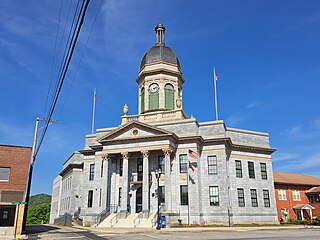
Cherokee County is the westernmost county in the U.S. state of North Carolina. It borders Tennessee to its west and Georgia to its south. As of the 2020 census, the population was 28,774. The county seat is Murphy.
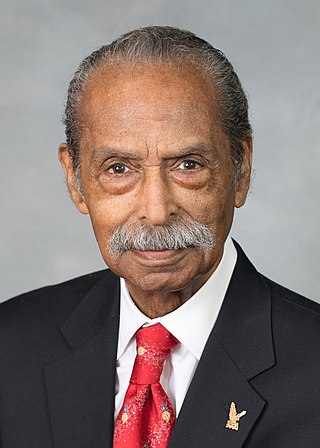
Henry McKinley "Mickey" Michaux Jr. is an American civil rights activist and Democratic member of the North Carolina General Assembly. He represented the state's thirty-first House district from 1983 to 2019 and previously served from 1973 through 1977. The district included constituents in Durham County. Upon his retirement, Michaux was the longest-serving member of the North Carolina General Assembly. In the 2007-2008 session, Michaux served as senior chairman of the House Appropriations Committee and chairman of the House Select Committee on Street Gang Prevention.
Pamela Y. Duncan is an American novelist. Her novels include Moon Women (2001), Plant Life (2003), and The Big Beautiful (2007). Her awards include the Sir Walter Raleigh Prize in 2003, and in 2000 she was chosen as one of the Ten Best Emerging Writers in the South. She won an American Library Association award in 2007. Her work often focuses on the lives of working class Southerners.
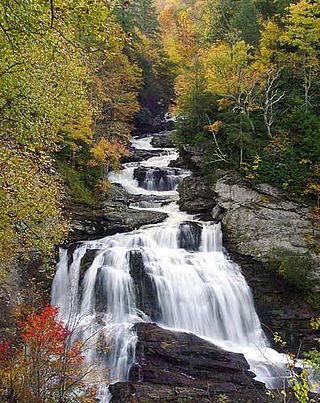
The Nantahala National Forest is the largest of the four national forests in North Carolina, lying in the mountains and valleys of western North Carolina. The Nantahala is the second wettest region in the country, after the Pacific Northwest. Due to its environmental importance and historical ties with the Cherokee, the forest was officially established on January 29, 1920, by President Woodrow Wilson. The word "Nantahala" is a Cherokee derived word, meaning "Land of the Noonday Sun." In some spots, the sun reaches the floors of the deep gorges of the forest only when it is high overhead at midday. This was part of the homeland of the historic Cherokee and their indigenous ancestors, who have occupied the region for thousands of years. The Nantahala River runs through it.
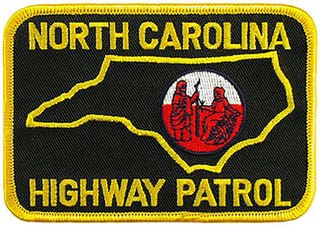
The North Carolina State Highway Patrol (NCSHP) is the highway patrol agency for North Carolina which has no per-se "state police" agency. The Patrol has jurisdiction anywhere in the state except for federal or military installations and on the Cherokee Indian Reservation or on Cherokee outlying lands in the western mountains. NCSHP personnel at times conduct formations, inspections, honor guard activities. The primary mission of the North Carolina State Highway Patrol is to ensure safe and efficient transportation on the streets and highways, reduce crime, protect against terrorism, enforce motor vehicle laws, and respond to natural and man-made disasters.
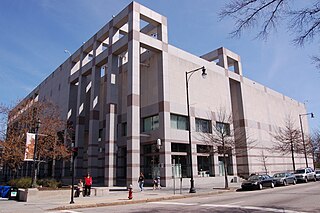
The North Carolina Museum of History is a history museum located in downtown Raleigh, North Carolina. It is an affiliate through the Smithsonian Affiliations program. The museum is a part of the Division of State History Museums, Office of Archives and History, an agency of the North Carolina Department of Cultural Resources.

The Museum of the Albemarle is located in Elizabeth City, North Carolina. It serves as the northeastern regional branch of the North Carolina Museum of History. This area of North Carolina is sometimes considered the birthplace of English North America, with close proximity to Roanoke Island and the "Lost Colony" of 1585.
State Fairgrounds Speedway, located at the North Carolina State Fairgrounds in Raleigh, North Carolina, was a half-mile oval dirt racetrack which was the site of auto races for NASCAR's top series in 1955, 1969, and 1970. The race on September 30, 1970 was the final Grand National race ever held on a dirt track, until the 2021 season. It was won by Richard Petty in a Plymouth that had been sold by Petty Enterprises to Don Robertson and rented back for the race.

Jaki Shelton Green is an American poet. In November 2009, she was named the first Piedmont Laureate by a collection of Triangle-area arts councils. She currently resides in Mebane, North Carolina. Green teaches Documentary Poetry at Duke University within the Center for Documentary Studies.
The North Carolina Arts Council is an organization in the U.S. state of North Carolina that provides grants to artists, musicians and arts organizations. The group's mission is "arts for all people." It was founded by executive order in 1964 by Governor Terry Sanford, and it became a statutory state agency on April 11, 1967. It is an agency of the North Carolina Department of Natural and Cultural Resources, which is the United States' first cabinet-level state agency for the arts, history and libraries. It operates from headquarters in Raleigh.
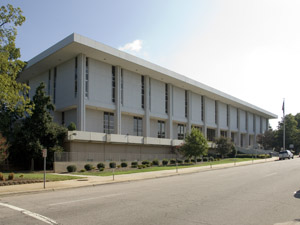
The State Archives of North Carolina, officially the North Carolina Division of Archives and Records, is a division of North Carolina state government responsible for collecting, preserving, and providing public access to historically significant archival materials relating to North Carolina, and responsible for providing guidance on the preservation and management of public government records to state, county, city and state university officials. First founded as the North Carolina Historical Commission in 1903, the State Archives has undergone multiple changes in organization, title, and relation to other state agencies. Since May 2012, it has been known as the Division of Archives and Records within the North Carolina Department of Natural & Cultural Resources' Office of Archives and History.
Jerry Gershenhorn is an American historian who currently holds the Julius L. Chambers Professorship in American History at North Carolina Central University. He received his PhD from the University of North Carolina at Chapel Hill.
David Zucchino is an American journalist and author.

Southern Railway Freight Station is a historic railway station located at Morganton, North Carolina. Built-in 1929, it is listed on the National Register of Historic Places.

Lincoln Heights School was a historic six-teacher Rosenwald School. Built-in 1924, the buildings of the school are now listed with National Register of Historic Places for its significance in education of African American children across Wilkes County, North Carolina.

The North Carolina Highway Historical Marker Program was created by the North Carolina General Assembly in 1935. Since that time over 1600 black and silver markers have been placed along numbered North Carolina highways throughout the state. Each one has a brief description of a fact relevant to state history, and is located near a place related to that fact.
References
- 1 2 3 Guide to North Carolina Highway Historical Markers (July 2020 ed.). North Carolina Office of Archives and History.
- 1 2 "About The Historical Marker Program | NC DNCR". www.ncdcr.gov. Retrieved 2021-08-02.
- ↑ "NC Highway Historical Marker Program | NC DNCR". www.ncdcr.gov. Retrieved 2021-08-02.